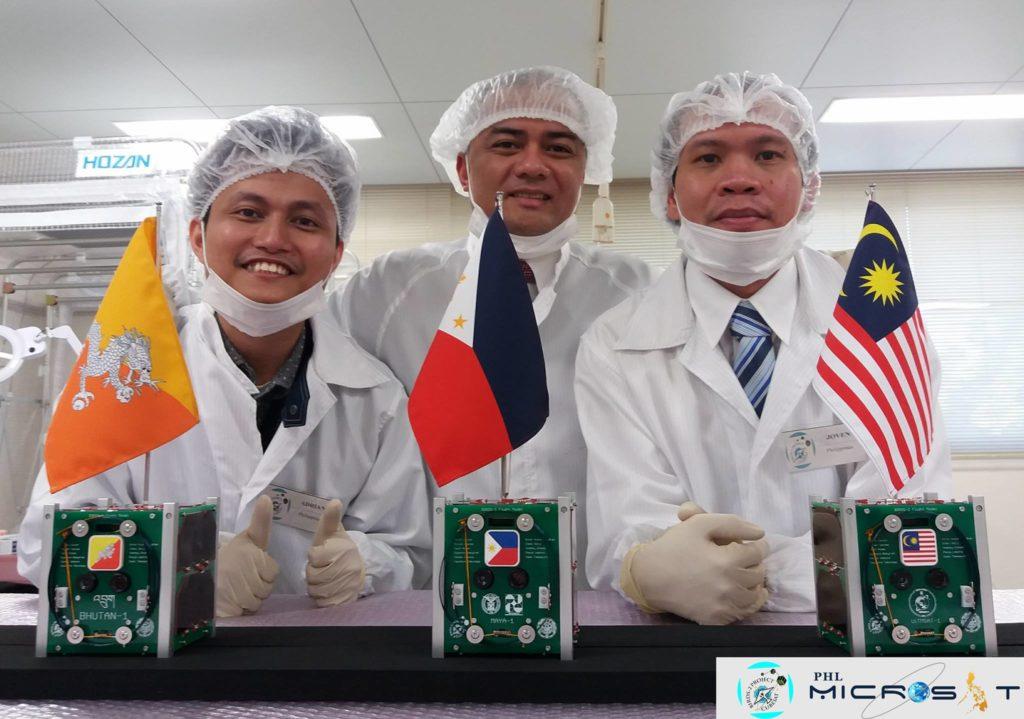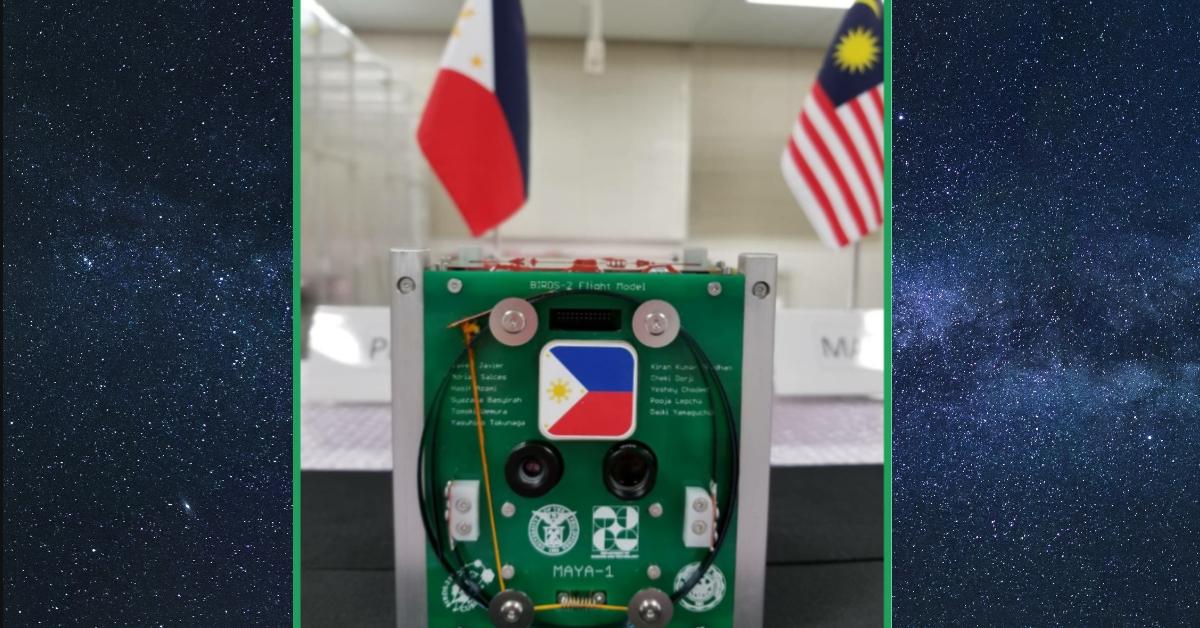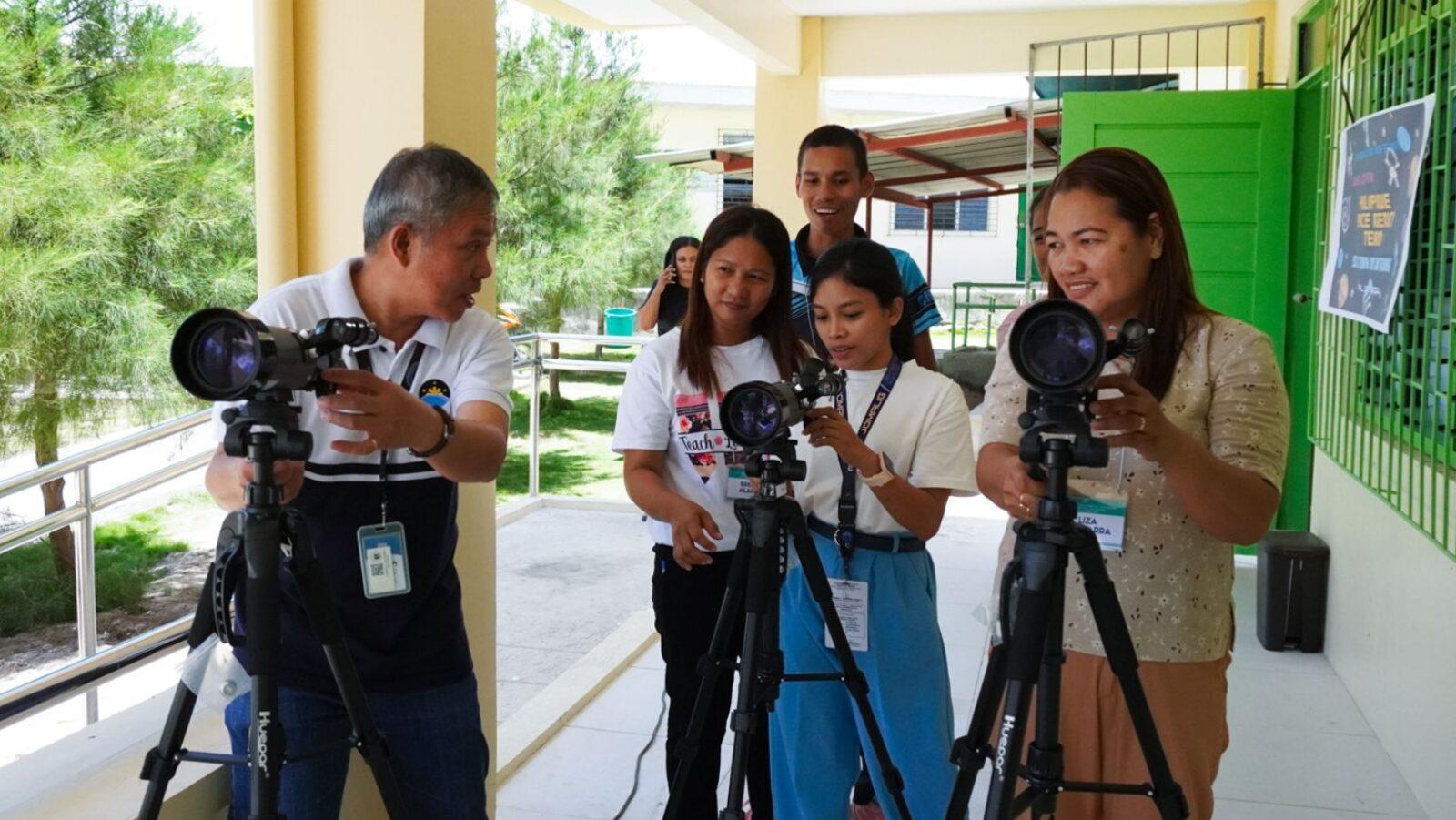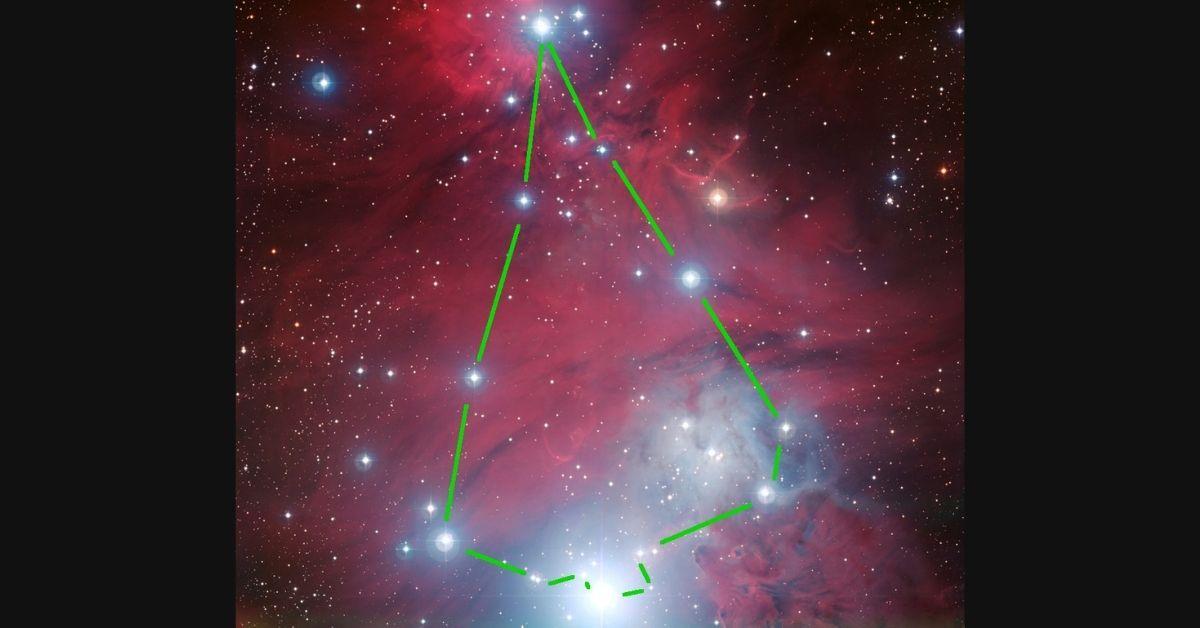Minute, multi-colored, and most likely an entirely different species from the one you’re picturing in your head right now, the chestnut munia (colloquially known as the maya bird) enjoyed an uncontested reign as the national bird of the Philippines until 1995, when the majestic Philippine eagle swooped down to take its place.
Despite being swiftly and unceremoniously unseated, however, the little Lonchura atricapilla got the last laugh, almost 23 years later. After all, having a pioneering part of Philippine space history named after you is no small feat.
“The name [“Maya-1” came from] the PHL-Microsat team, and it won our vote,” shared Joven Javier, Project Manager of the Birds-2 Cube Satellite project. Officially described as a “cross-border interdisciplinary satellite project,” the BIRDS project was initiated by the Kyushu Institute of Technology (Kyutech) in Japan to assist non-space-faring countries in building their own miniature satellites. The resulting cube satellites (or CubeSats) are identical in both appearance and features. They follow the exact same design specifications per batch: a 10-centimeter cube weighing 1 kg, with image capture, audio transmission, and remote sensor data collection capabilities.
The Philippines, Malaysia, and Bhutan joined the second iteration of the program (Birds-2). The three nations followed in the footsteps of Bangladesh, Ghana, Japan, Mongolia, and Nigeria from the Birds-1 initiative in 2017. Javier, a master’s degree student, paired up with a doctorate student, Adrian Salces, to represent the Philippines and work together on the cube satellite officially known as Maya-1. Javier and Salces, both under Kyutech’s space engineering program, had specific roles to fulfill for the project; while the former functioned as the PH team’s Electronics PCB Designer, the latter focused on the satellite’s Ground Station Segment and Communication Subsystem.
Alongside its sister satellites UiTMSAT-1 (from Malaysia) and Bhutan-1 (from Bhutan), Maya-1 was sent to the International Space Station (ISS) on June 29, 2018. It was launched aboard the SpaceX Falcon-9 CRS 15 rocket, which took off from the United States in Cape Canaveral, Florida.
Little steps
The Maya-1 is equipped with two cameras with different focal lengths, allowing it to capture images of Earth and function as a low-cost observation satellite. It can also serve as a transmitter for audio communications over the amateur radio band, and is capable of collecting sensor data from stations in various remote areas on Earth. Furthermore, it can detect space radiation anomalies within a limited range. This is a crucial feature for radiation research and mapping in low orbit.
All those features and more, in a cube that’s only about as big as the bird it was named after.
According to Javier, Maya-1 demonstrates that it is possible to utilize low-cost and commercially available components in space-related applications. Furthermore, Maya-1 provides the opportunity to learn the entire “process and cycle” of satellite development, from the mission planning stage to launching it into space.
Think this pint-sized project’s primary purpose is purely academic? Quite the opposite: Once Javier and Salces obtain their respective degrees, they will use what they learned from the Birds-2 project to build another cube satellite and impart their knowledge to other Pinoy space engineers. This will serve as part of the foundation for a sustainable space program in the Philippines.

(L-R) BIRDS-2 PHL Team Member Adrian Salces, PHL-Microsat Program Leader Dr. Joel Joseph Marciano, and BIRDS-2 Project Manager Joven Javier stand and smile behind the Bhutan-1, Maya-1, and UiTMSAT-1 Cube Satellite models. Photo credit: PHL-Microsat Facebook page
The Philippines spends an estimated Php 3.5 billion per year on acquiring space data and technology from other countries, which local agencies use in weather monitoring, agriculture, communications, transportation, and other practical and crucial applications. Having our own sustainable space program will not only cut our costs significantly — it will also take us a step closer to becoming a truly independent and self-reliant nation.
Maya-1: The chibi cousin in an ever-growing family
It’s worth noting that Maya-1 is not the first Pinoy-made non-commercial satellite. That distinction officially belongs to Diwata-1, the microsatellite built by the PHL-Microsat (Philippine Scientific Earth Observation Microsatellite) team and deployed into orbit on April 27, 2016.
However, aside from their weight — microsatellites are larger than cube satellites, typically somewhere between 10 kg and 100 kg — another significant difference between Diwata-1 and its smaller “cousin” is that the former has no telecommunication capabilities.
Javier and Salces will be helping the PHL-Microsat team in implementing Space Environment Testing for Diwata-2, the next major project for the collaborative research program of the University of the Philippines Diliman and the Department of Science and Technology-Advanced Science and Technology Institute (DOST-ASTI). Diwata-2 will continue its predecessor’s mission of monitoring the Philippines’ agricultural landscape upon the end of Diwata-1’s life expectancy in November 2018. Diwata-2, however, will come with an upgrade of sorts: an amateur radio payload, meant to relay messages across the Philippines for disaster relief. Incidentally, disaster monitoring and research are among Javier’s recommended practical uses for the technology behind Maya-1.
Starting small, thinking big
Upon reaching the ISS, Maya-1 and its siblings will undergo preparations for their release into orbit, which is scheduled for August 2018. From there, the cube satellites are expected to stay in orbit for at least a year, depending on lower-orbit atmospheric drag. An international ground station network, which includes UP Diliman’s Amateur Radio and Satellite Station (ARSS), will operate the satellites.
This is in line with the Birds-2 project’s objective of facilitating further collaboration among developing countries as their respective space programs remain in their nascent stages. Meanwhile, despite how differences in nationality and culture made being Project Manager a bit challenging, Javier regards it as a very high honor. “It’s the best experience ever,” he gushed, “because it’s very rare to have the opportunity to lead an international team like this.”
After Maya-1, Javier expects more cube satellites to be made entirely within the country by Filipinos. He cited that the Department of Science and Technology (DOST) recognizes how cost-efficient cube satellites are in terms of satellite design and development. “Maya-1 [serves as] an educational platform to learn how to build low-cost satellites, rather than spend millions and billions on commercial satellites,” he said.
Some Filipinos believe that the maya should still be our national bird, as it embodies a few admirable traits: humility, resilience, and the ability to adapt and thrive in unfamiliar environments. While this line of thinking may or may not have been the catalyst behind the selection of Maya-1’s moniker, one thing is certain: With the right skills, support, and resources, even something as small as a maya can reach previously unatttainable heights.
Cover photo:Felix Mittermeier from Pexels; PHL-Microsat via the DOST-ASTI Facebook page
References:
- https://asti.dost.gov.ph/diwata
- https://www.audubon.org/field-guide/bird/eurasian-tree-sparrow
- https://www.facebook.com/DOSTASTI
- https://www.flipscience.ph/space/10-things-need-know-diwata-1-project/
- http://www.gmanetwork.com/news/scitech/science/584375/why-the-philippines-needs-a-national-space-agency/story/
- https://www.rappler.com/science-nature/earth-space/206090-philippine-launches-cube-satellite-space-june-29-2018
- https://www.rappler.com/technology/features/171988-diwata-1-diwata-2-improvements-up-tech-fair
- http://www.unoosa.org/documents/pdf/psa/activities/2017/SouthAfrica/slides/Presentation74.pdf
Author: Mikael Angelo Francisco
Bitten by the science writing bug, Mikael has years of writing and editorial experience under his belt. As the editor-in-chief of FlipScience, Mikael has sworn to help make science more fun and interesting for geeky readers and casual audiences alike.







